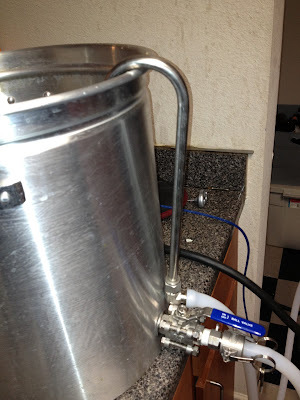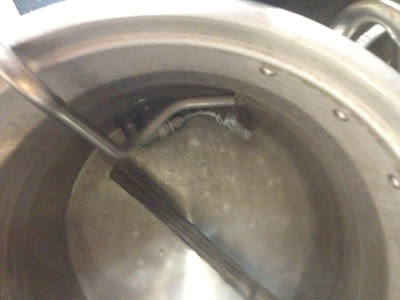Voltin (sorry, don't ever see a name),
Hope grad school is going well and that you're finding time to brew. I've cut and polished a keg my son got free from his bottleshop boss and ordered weldless ball valve and sight glass. Gonna use propane first. We just put a contract on a house; the rental we're in doesn't have a convenient way to get 220V outside (wife won't let us brew indoors).
voltin said:
The only problem is that I sized my kettle for 5G batches, so I can not do full volume BIAB.
In order to overcome this oversight, I heated up the remaining water on my stove top and did a mini-sparge.
So, you're doing what the guys on the BIAB Forum call "Maxi-BIAB".
http://biabrewer.info/viewtopic.php?f=89&t=352
If your kettle can't hold the entire volume of water, then you keep out a certain portion and mash with as much as you can for your kettle. Then you perform 1 or 2 dunk sparges. If your kettle will allow the full boil volume, you add it at the boil. If not, you add it throughout the boil as your volume decreases.
The reason I'm thinking about this is that I'm planning on purchasing a 40-44qt kettle and will likely need to do this for beers over 1.060.
voltin said:
EDIT: Forgot to mention that I ended up modding my steamer basket to give it that swiss cheese look. It seems to help the flow, but like I said my pump isn't working so it remains to be seen how much it helped.
Todd (thughes) was the one who posted the pics of his swiss cheese basket. He has since omitted the basket from his process because it would never allow the recirculation. Not being an engineer, I'm thinking that, when raising the bag by itself as most seem to do, the tiny holes in the weave actually stretch a little allowing it to drain more quickly. When using the basket, the bag is fully supported and doesn't stretch, so the flow will always be a bit slower. Admittedly, it just looks neater and easier to use the basket.
Regarding recirculating, I'm wondering if part of the problem is that folks are trying to recirculate too quickly. Perhaps, it should be a rather slow flow.
I'm agonizing about how to put the element onto the kettle. I don't weld, and I don't know anyone who does. I don't have a drill press to use to make Kal's mount. I may just purchase one of his pre-assembled for the keg.
Gotta get ready for work,
Keith










































![Craft A Brew - Safale S-04 Dry Yeast - Fermentis - English Ale Dry Yeast - For English and American Ales and Hard Apple Ciders - Ingredients for Home Brewing - Beer Making Supplies - [1 Pack]](https://m.media-amazon.com/images/I/41fVGNh6JfL._SL500_.jpg)

















